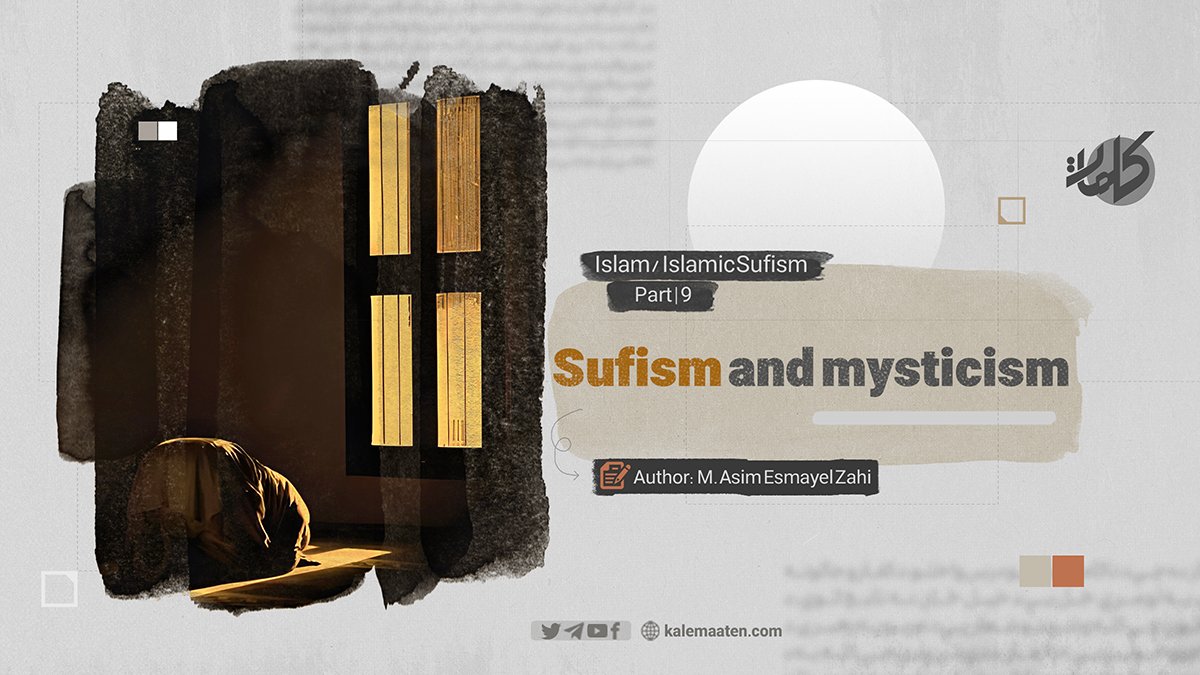
Author: M. Asim Esmayel Zahi
Sufism and Mysticism (Part Nine)
7th Century:
In this century, numerous eminent mystics emerged. Below, we mention some of them in the order of their passing:
1. Sheikh Najmuddin Kubra Khwarazmi:
Sheikh Najmuddin Kubra, one of the most renowned and prominent mystics, is the origin of many spiritual lineages. He lived in Khwarazm during the Mongol invasion. When the Mongols planned to attack Khwarazm, they sent a message to Sheikh Najmuddin asking him to leave the city for his safety. However, Sheikh Najmuddin responded: “I stood by these people in times of ease, and I will not abandon them in times of hardship.” He fought valiantly alongside the people and was martyred in 616 AH.
2. Sheikh Fariduddin Attar Nishapuri:
Sheikh Attar was a foremost mystic and an accomplished writer in both prose and poetry. His *Tazkirat al-Awliya* is a significant source detailing the lives of mystics and Sufis, widely appreciated by orientalists. His *Conference of the Birds* (*Mantiq al-Tayr*) is a masterpiece of mysticism. Rumi praised him, saying:
“Attar was the soul, and Sana’i his two eyes;
We have come after Attar and Sana’i.”
He also remarked:
“Attar traversed the seven cities of love;
We are still lost in a single alley.”
The “seven cities of love” refers to the seven valleys described in *Mantiq al-Tayr.* Attar was a disciple of Sheikh Majduddin Baghdadi, who was himself a student of Sheikh Najmuddin Kubra. He also associated with Qutbuddin Haydar, a prominent mystic of the time buried in Turbat-e-Haydariyeh. Attar passed away during the Mongol turmoil and, according to some, was killed by the Mongols between 626 and 628 AH.
3. Sheikh Shahabuddin Suhrawardy Zanjani:
He is the author of the famous book *Awarif al-Ma’arif,* a key text on mysticism and Sufism. Descended from Abu Bakr, he made annual pilgrimages to Mecca and Medina and had associations with Abdul Qadir Gilani. Notable disciples include Sheikh Saadi Shirazi and Kamaluddin Ismail Isfahani. Saadi wrote about him:
“My guiding Sheikh Shihab once gave me two pieces of advice:
First, never be arrogant within yourself.
Second, never view others with disdain.”
This Suhrawardy should not be confused with Sheikh Shahabuddin Suhrawardy, the philosopher known as Sheikh al-Ishraq, who was executed in Aleppo around 581-590 AH. The mystic Suhrawardy passed away around 632 AH.
4. Ibn al-Farid Misri:
A top-tier mystic, Ibn al-Farid composed Arabic mystical poetry of exceptional elegance and refinement. His *Diwan* has been widely published, with several prominent scholars offering commentaries. One of its interpreters is Abdul Rahman Jami, the 9th-century mystic. Ibn al-Farid’s Arabic mystical poetry is comparable to Hafiz’s Persian works. When asked to write a commentary on his poems, he replied to Ibn Arabi: “Your *Futuhat Makkiyah* is the commentary on my poems.” Known for his unusual states of spiritual ecstasy, he often composed his verses while enraptured. He passed away in 632 AH.
5. Muhyiddin Ibn Arabi Hatimi Ta’i Andalusi:
A descendant of Hatim al-Tai, Ibn Arabi was born in Andalusia but spent much of his life in Mecca and Syria. A student of Sheikh Abu Madyan Maghribi Andalusi, a 6th-century mystic, his spiritual lineage traces back to Sheikh Abdul Qadir Gilani. Known as “Sheikh al-Akbar” (The Greatest Sheikh), Ibn Arabi is regarded as the greatest mystic of Islam, revolutionizing the mystical tradition in the 7th century by introducing its philosophical and theoretical dimensions.
He authored over 200 books, with *Futuhat Makkiyah,* an encyclopedic work on mysticism, and *Fusus al-Hikam,* a dense and profound mystical text, being among his most notable contributions. His works remain challenging, with only a few capable of comprehending their depth. Ibn Arabi passed away in Damascus in 638 AH, where his grave remains a revered site.
6. Sadruddin Muhammad Qunawi:
A native of Konya (modern-day Turkey), Sadruddin Qunawi was a disciple, stepson, and successor to Ibn Arabi. He was a contemporary of Khwaja Nasiruddin Tusi and Rumi, sharing a respectful correspondence with Tusi. In Konya, he shared a deep bond of friendship with Rumi, who would attend prayers led by Qunawi. It is believed that Rumi learned Ibn Arabi’s mystical teachings from Qunawi, evident in his works.
Qunawi was instrumental in explaining and preserving Ibn Arabi’s complex ideas, and his writings remain significant in Islamic philosophy and mysticism. He passed away in 672 or 673 AH.
7. Mawlana Jalaluddin Muhammad Balkhi Rumi:
Known worldwide as Mawlana, he is one of the greatest Islamic mystics and a genius whose lineage traces back to Abu Bakr. His masterpiece, *Masnawi,* is a treasure trove of wisdom, mysticism, and spiritual insight. Born in Balkh, he accompanied his father on a pilgrimage to Mecca, where they met Sheikh Attar in Nishapur. Settling in Konya, Rumi initially lived as a scholar and teacher but underwent a profound transformation after meeting the mystic Shams Tabrizi. He passed away in 672 AH.
8. Fakhruddin Iraqi Hamadani:
A renowned poet and mystic, Fakhruddin Iraqi was a disciple of Sadruddin Qunawi and trained under the aforementioned Sheikh Shahabuddin Suhrawardy. He passed away in 688 AH.
Continues…


